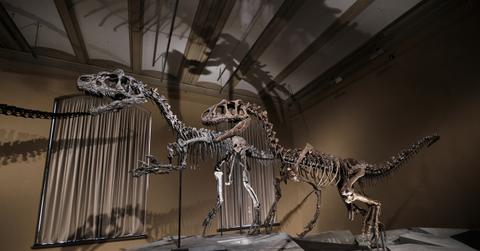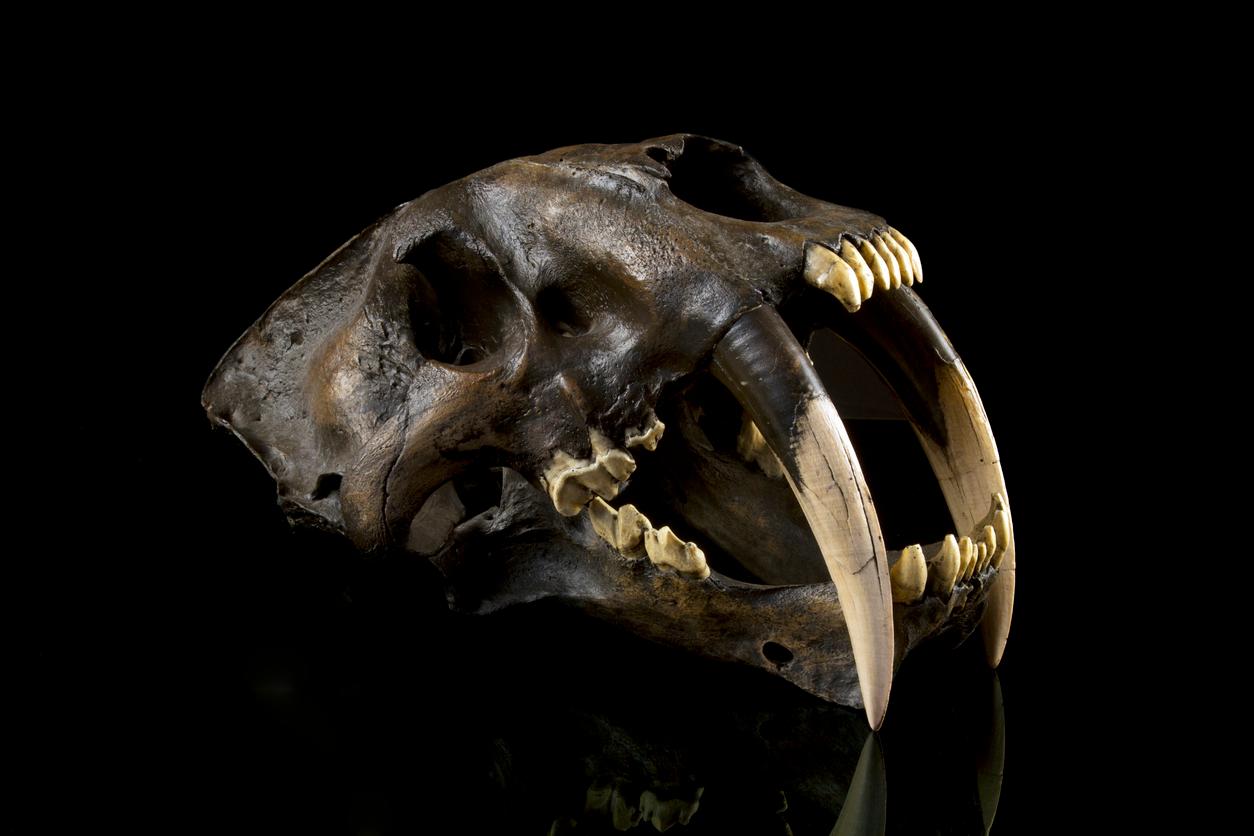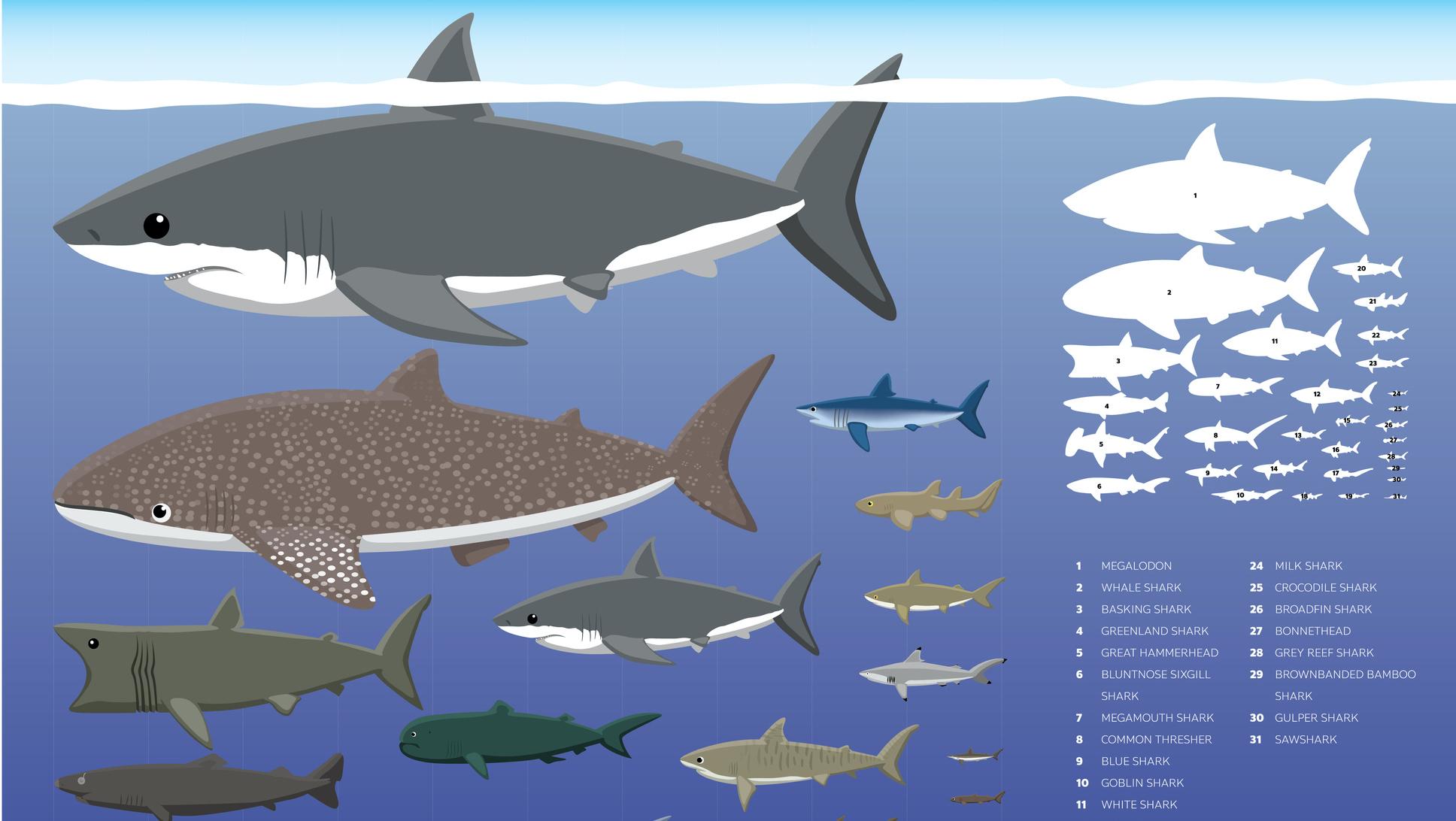Scary Extinct Animals That Will Keep You up at Night
Updated Dec. 13 2022, 12:44 p.m. ET

Sometimes we’re better off not knowing certain animals existed. While we’re used to seeing cats, dogs, raccoons, and the occasional bear or snake depending on your location, the fact that these animals actually existed can be difficult to wrap our minds around.
Luckily, this is a list of scary extinct animals as opposed to scary living animals. Usually, we don’t celebrate animals going extinct, but in this case, we might all sleep more soundly knowing that these creatures aren’t walking, swimming, or flying around.
Saber-Toothed Cats

Lions and tigers are scary enough, but saber-toothed cats? That’s too much. According to National Geographic, these animals first appeared 2 million years ago, inhabiting North and South America.
It makes sense to assume that these saber-toothed cats are similar to the cats we know today, like lions and tigers, but they're much different. “Sabertooths had a short tail and a heavy, muscular build. Their physical features helped them to ambush and pounce on their prey, rather than slowly stalk and chase it down,” National Geographic explained.
One interesting (and scary) fact, is that scientists don’t actually know the purpose of the large fangs that these cats had. This is especially disturbing because smilodon fatalis — another word for sabertooth — translates to “deadly knife tooth,” according to National Geographic.
Megalodon

If the movie Jaws freaks you out, then this extinct animal is probably your worse nightmare. The Megalodon was basically a huge, killer shark. This prehistoric animal weighed as much as 30 large great white sharks combined (50 to 75 tons), and was 40 to 60 feet long, according to National Geographic.
Megalodons had huge mouths and teeth. One of the largest Megalodon teeth ever found was the length of a TV remote, National Geographic described. Another interesting fact about these disturbingly large sharks is that their bite force was stronger than a T-Rex — three times stronger.
Meganeura
Something about the idea of a giant insect is unsettling. And according to National Geographic, these giant insects were common back in the day due to a surplus of oxygen in the atmosphere. Meganeuras looked similar to dragonflies — just much, much bigger. Apparently, this predatory insect from 300 million years ago, had a 30-inch wingspan!
Josephoartigasia
Listen, you probably think you’ve seen some pretty large rodents in New York City, but those little guys are nothing compared to the Josephoartigasia. Essentially, this extinct animal is an extremely large rat. In fact, it’s the largest rodent ever recorded, according to National Geographic. It weighed around 2,200 pounds!
Sarcosuchus
Crocodiles are scary enough as is, but about 110 million years ago, they were much scarier, according to the University of Chicago. The sarcosuchus was first discovered in Niger, Africa, and was a top predator thanks to its large size, sharp teeth, and powerful jaw.
BBC’s YouTube Channel, BBC Earth Unplugged, described the sarcosuchus as the world’s largest crocodile, coming in at 12 meters long and weighing 15 tons. This animal could hunt both in the water and on land, making it a very well-adapted predator.